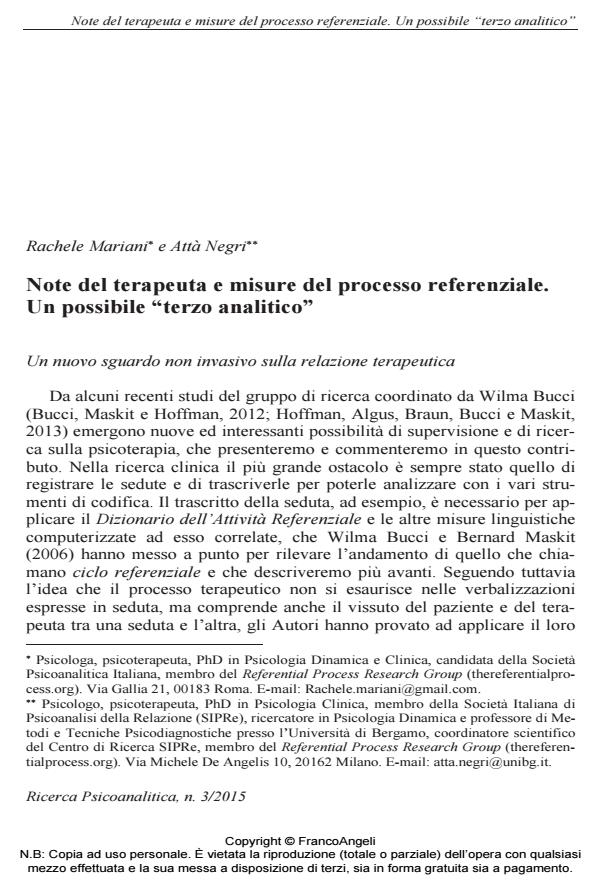Therapist’s notes and measures of the referential process. A possibile "analytic third".
Journal title RICERCA PSICOANALITICA
Author/s Rachele Mariani, Attà Negri
Publishing Year 2015 Issue 2015/3
Language Italian Pages 15 P. 119-133 File size 106 KB
DOI 10.3280/RPR2015-003009
DOI is like a bar code for intellectual property: to have more infomation
click here
Below, you can see the article first page
If you want to buy this article in PDF format, you can do it, following the instructions to buy download credits

FrancoAngeli is member of Publishers International Linking Association, Inc (PILA), a not-for-profit association which run the CrossRef service enabling links to and from online scholarly content.
The Author presents an analysis of a therapist’s notes on the clinical work with a patient by means of Multiple Code Theory computerized linguistic measures. In accordance with literature the results show a strong connection between the linguistic properties of the therapist’s notes and the effectiveness of treatment. Thus, the linguistic analysis of the therapist’s notes not only expands the possibilities of clinical research, but also could be a useful support to understand and predict the evolution of a case and the type of relationship developed by the therapeutic couple. Clinicians that adopt this methodology in their professional practice have a useful tool facilitating supervision and reflection on the case. This tool can be considered as an "analytic third" monitoring and strengthening the referential process that connects therapists to their lived emotional experience and to patients.
Keywords: Multiple code theory, referential process, change factors, therapeutic relationship, supervision
- Epistemological Foundation for the Use of the Linguistic Measures of the Referential Process Attà Negri, Arianna Barazzetti, in Journal of Psycholinguistic Research 33/2025
DOI: 10.1007/s10936-025-10149-1 - Relation between referential and reflexive processes: an explorative study Giovanna Esposito, Livia Savarese, Barbara Squitieri, in Counselling Psychology Quarterly /2019 pp.186
DOI: 10.1080/09515070.2018.1428528
Rachele Mariani, Attà Negri, Note del terapeuta e misure del processo referenziale. Un possibile "terzo analitico" in "RICERCA PSICOANALITICA" 3/2015, pp 119-133, DOI: 10.3280/RPR2015-003009